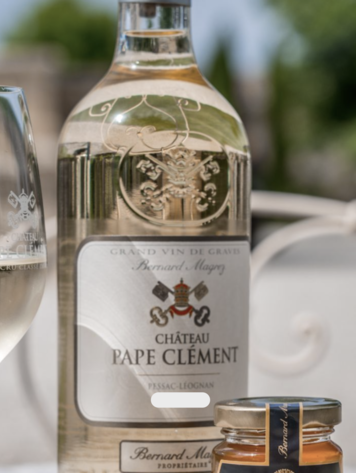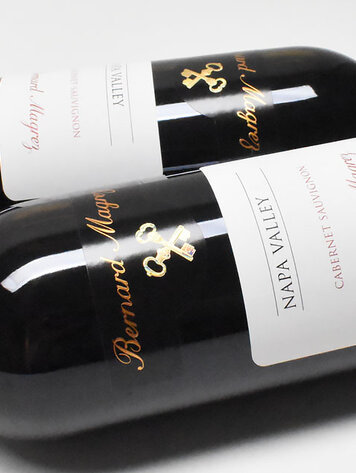96pts James Suckling
Intense blackberry and blueberry aromas as well as mushroom undertones. Violets, too. Sweet tobacco. Full-bodied and layered with polished tannins. Very long and beautiful. Give it two or three years to show what it has but already a beauty.
95pts Jeb Dunnuck
In a vintage that can lack a little pizzazz, the 2014 Pape Clement stands out for its exuberant, sexy, full-bodied style. Checking in as a blend of 58% Merlot, 38% Cabernet Sauvignon and the balance Petit Verdot, aged in 60% new French oak, its deep purple color is followed by a layered, ripe, sexy wine that has loads of currants, blackberries, smoke tobacco, and forest floor aromas and flavors, with just a touch of chocolaty oak. Silky and incredibly pure on the palate, with impeccable balance and sweet, yet present tannin, it’s already impossible to resist, yet is going to deliver the goods for another 20-25 years. It’s a beauty!
94pts Wine Advocate
The 2014 Pape Clement has quite a potent bouquet with lavish red cherry, kirsch, iodine and pastille-like scents, the oak probably needing another couple of years to fully integrate. The palate is medium-bodied with supple tannin, a fine line of acidity, quite refined and focused with appreciable tension towards the finish that comes laden with succulent, tobacco-infused blackberry fruit. This is a sumptuous and yet refined Pape-Clement that demonstrated the most matière or substance out of all the Pessac-Léognan 2014s that I tasted, except for the Haut-Brion. It is certainly a wine destined for a long future.
94pts Decanter
This is a restrained version of Pape Clément compared to some vintages, and for me all the more successful because of it. Fine but firm tannins, there is a grip and lovely hold to the fruits, which in turn are dark, brambly, bilberry and cassis. Great potential for medium to long term. Without the swagger that the château displays in 2009 or 2010, but I love the stylistic expression here, from 52% Cabernet Sauvignon, 44% Merlot, 2% Petit Verdot and 2% Cabernet Franc. Good yields also, 45 hl/h, so it is concentrated but not overly so.
94pts Wine Enthusiast
Ripe and richly fruity, the wine is full bodied with great acidity as well as firm tannins. It will keep for many years. Bold tannins and a fine tension between the fruit and acidity are all promising for the future.
93pts Wine Spectator
Lavish in profile, this sports a range of warm fruitcake, anise and black tea aromatics followed quickly by a gush of raspberry, plum and boysenberry confiture notes. Velvety, showing ample structure through the finish, pulling the fruit and wood notes together. A rare bird, stylistically, in this generally understated vintage. Best from 2020 through 2035.
Winemaker Notes
A wine of good density ruby red, with brown, mahogany, biscuit hints. The rim is fairly thick and the legs are fine, clear, abundant and regular. At once expressive, forthright and complex. There are notes of all families of fragrance: fruit, flowers, and spices. The attack is forthright, round and suave, soothing even. The intense aromas initially recall the complexity of the nose. There is leather and lightly charred wood, and roasted notes. The beauty of the wine is revealed by its elegance rather than its full-flavor. The wine has an attractive aromatic range with a finish of remarkable elegance.
History Chateau Pape Clément owes its name to its most illustrious owner. A man of the cloth born in 1264, Bertrand de Goth became Bishop of Comminges, in the Pyrenees Mountains, at the age of 31; he later became Archbishop of Bordeaux in 1299.
He then received as a gift the property in Pessac, the Vineyard de La Mothe. Taken by a passion for the vine, he continually took part personally in equipping, organizing and managing the domain in accordance with the most modern and rational practices. Nevertheless, on 5 June 1305 the cardinals met in a conclave in Pérouse and appointed him to succeed Pope Benedict XI, who had passed away prematurely after only eleven months of reign. Bertrand de Goth took the name of Clement V.
Supported by Philip IV, it was he who decided in 1309 to move the papal court to Avignon, thus breaking with Rome and its battles of influence. During this same period, the weight of his responsibilities led him to relinquish his property, giving it to the Archbishop of Bordeaux. Henceforward, the vineyard was to be known to posterity under the name of this enlightened pope.
The early period
Management under the clergy brings modernity The grateful Church perpetuated Pope Clement's work. Each archbishop in turn turned to modernity and technical progress, to the point of the wine estate becoming a model vineyard. In addition to especially early harvests, which remain one of its special characteristics, Chateau Pape Clément is without a doubt the first vineyard in France to align vine stock to facilitate labour.
After the Revolution
At the end of the 18th century, the Archbishop of Bordeaux was dispossessed of his property. The papal vineyard became part of the public domain.
The 20th century
8 June 1937 was a dark day in the vineyard's history, when a violent hailstorm destroyed virtually the entirety of the estate. Two years later, Paul Montagne bought it and gradually brought it back to life. Thanks to his efforts, the vineyard returned to its former rank and stood up to the surge in urbanization. His descendents, Léo Montagne and Bernard Magrez, perpetuate this secular tradition so that Chateau Pape Clément wines continue to delight the wine-lovers of today and tomorrow.




